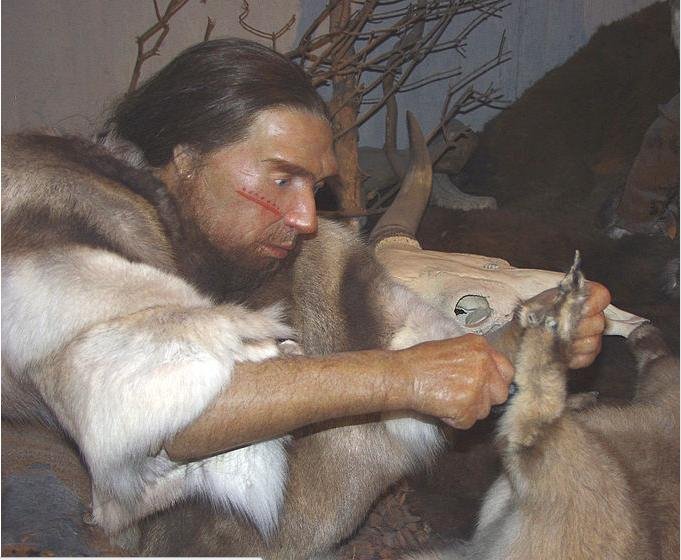A reconstruction of a Neanderthal male from the Neanderthal Museum.
CAMBRIDGE, England, July 19 (UPI) -- Spear hunting may not have given Neanderthals their powerful right arms; it may have come from scraping animal skins for clothes and shelters, researchers say.
Skeletons show Neanderthals, our closest known extinct relatives, had unusually strong right arms, as their right humerus -- the long arm bone associated with the biceps and triceps -- often possessed large anchor points thought to attach to powerful muscles, scientists said.
"Neanderthals have really interesting upper bodies," researcher Colin Shaw, a biological anthropologist at the University of Cambridge in England, told LiveScience. "If you and I are both right-handed, you'd expect 4 to 13 percent asymmetry between our arms.
"Neanderthals have up to 50 percent or more asymmetry. They were doing something with their dominant arms that were either more intense or repetitive or both than we do today."
Shaw thought to test a prevalent theory that held the arms might have grown strong through regular underhanded spear-thrusting.
The research measured electrical activity in the muscles of 13 right-handed men as they performed three different spear-thrusting tasks, and also analyzed the men as they carried out different scraping tasks on carpet.
The researchers found spear-thrusting led to significantly higher muscle activity on the left side of the body than on the right, opposite to what is seen in Neanderthal fossils.
"Spear-thrusting did not appear to explain the mystery," Shaw said.
In comparison, scraping tasks led to much higher muscle activity on the right side than on the left, he said.
"While hunting was important to Neanderthals, our research suggests that much of their time was spent performing other tasks, such as preparing the skins of large animals," Shaw said.
"If we are right, it changes our picture of the daily activities of Neanderthals," he said. "This is a lot more mundane than hunting big game all the time, but it shows forethought to prepare skins for use throughout the year."















